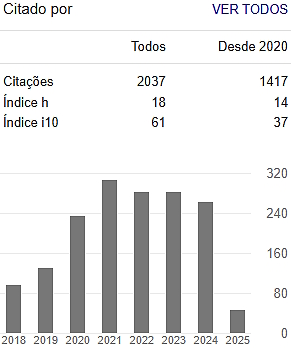Português
protuguês
Abstract
The objective of this work was to evaluate the efficiency of post-emergence herbicides applied to cowpea. Two trials were conducted in a randomized block with four replicates: in the first test the ready mix [bentazon + imazamox] associated or not with haloxyfop-p-methyl, phenoxaprop-p-ethyl, fluazifop-p-butyl, quizalofop-p-tefuryl, clethodim and tepraloxydim graminicides were tested. In the second trial [bentazon + imazamox], imazethapyr, bentazone + imazethapyr, ethoxysulfuron + bentazon, applied alone or associated with haloxyfop-p-methyl were tested. Non-weed and weeded controls were included as treatments. The mixture of [bentazon + imazamoxi] was selective to BRS Guariba cowpea cultivar BRS Guariba and promoted control of over 90% of Alternanthera tenella, Commelina benghalensis and Nicandra physaloides and did not control Eleusine indica, Cenchrus echinatus and Glycine max (volunteer soy plants). The imazethapyr associated or not to bentazon were selective to the cowpea, but promoted moderate or poor control for A. tenella, C. benghalensis, E. indica, C. echinatus and volunteer soy plants. The application of imazethapyr + bentazon showed excellent control of N. physaloides. Fifty five percent phytotoxicity was observed at 7 days after application of ethoxysulfuron + bentazon (DAA) and partial recovery of symptoms at 28 DAA (16%). However, the cowpea was tolerant to the etoxissulfuron + bentazone herbicides. The mixture of ethoxysulfuron + bentazon promoted control over 87% for N. physaloides and 100% for volunteer soy plants, but deficient (<60%) for A. tenella, E. indica and C. echinatus and moderate (>70%) control for C. benghalensis. For the control of E. indica and C. echinatus it was necessary to use the graminicides. Yields of cowpea on herbicide treatments were similar those obtained in the weed control and higher than the not weeded treatment, in both trials. The reduction of grain yield due to weeds was approximately 60%.
Downloads
Downloads
Published
Issue
Section
License
Copyright (c) 2020 Colloquium Agrariae. ISSN: 1809-8215

This work is licensed under a Creative Commons Attribution-NonCommercial-NoDerivatives 4.0 International License.

